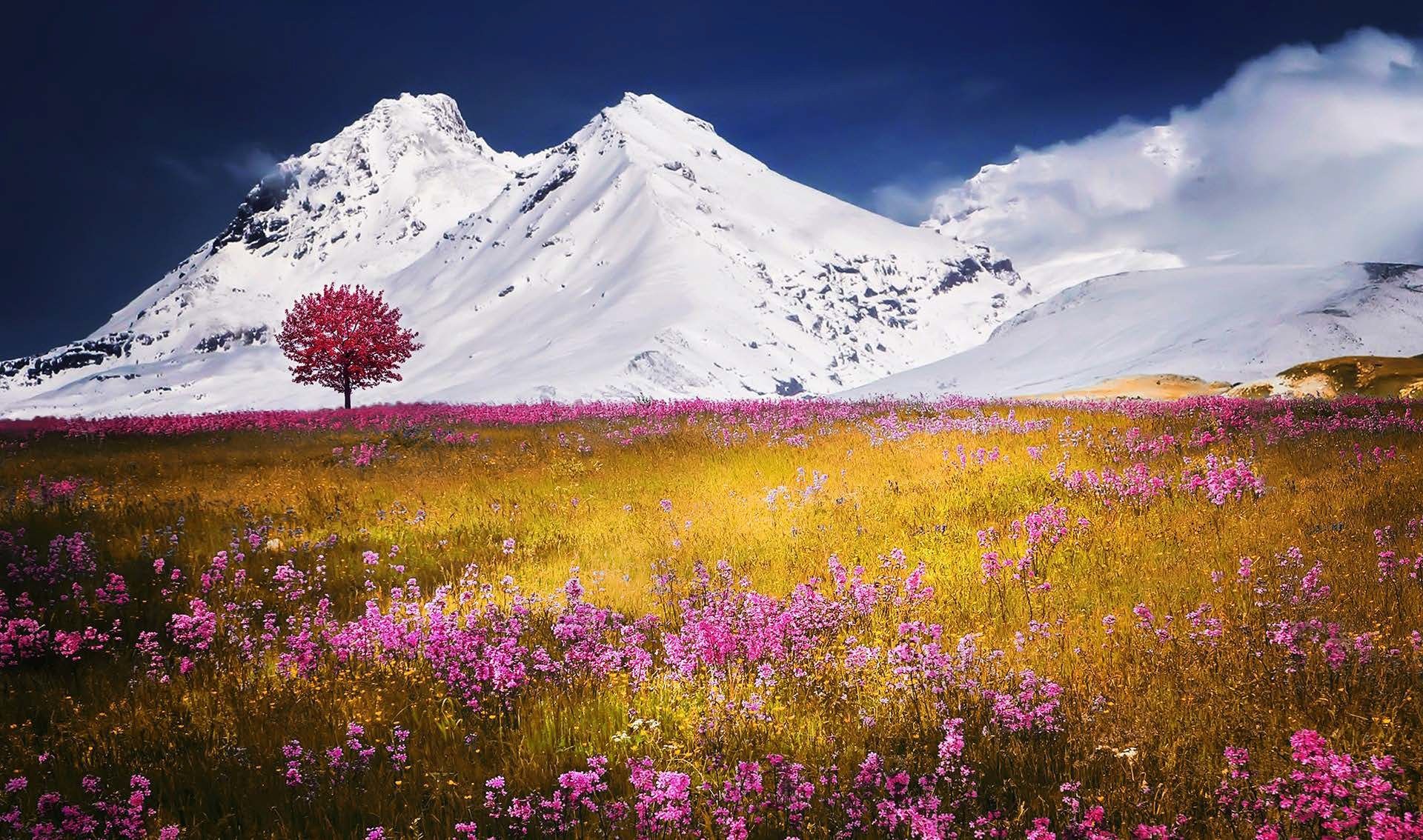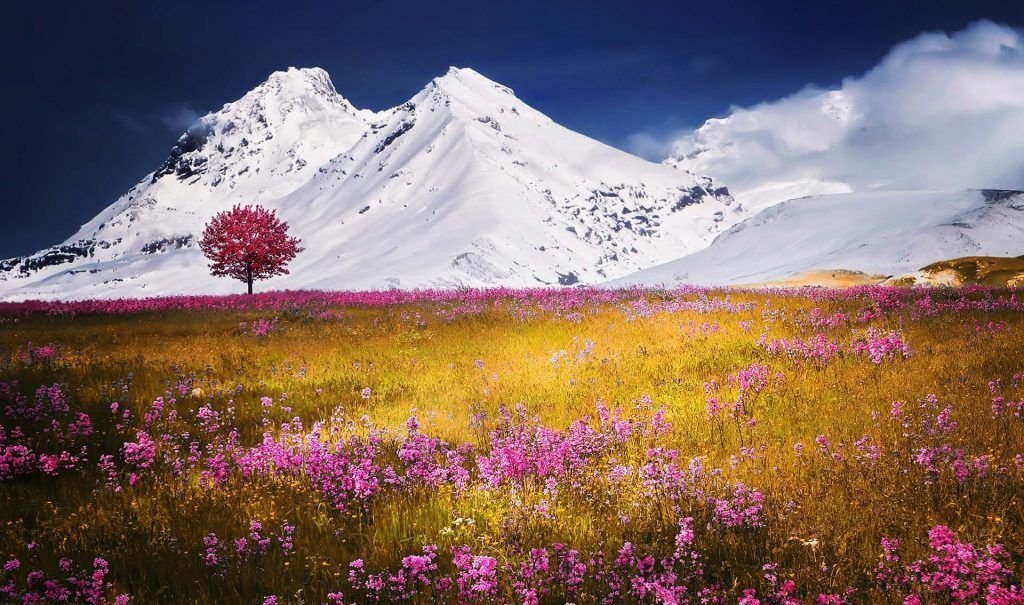Landscapes Aren't Easy
Every now and then, I see a photography website polling its users for the most popular type of photography. The usual suspects are present, of course: street, portraiture, still life, and more.
Yet, in almost all these polls, I usually see a clear winner: landscape photography.
There are reasons for this, of course. First of all, everyone loves landscapes – even non-photographers. Most people love gazing upon a beautiful scene as that image can transport them from their regular surroundings to a new, wondrous place.
Landscape photography also has a very low entrance threshold. The equipment required is very basic. In fact, you can shoot landscapes with nothing more than the camera on your phone.
Despite this, landscape photographers are some of the most dedicated and passionate in their field. They rise early, stay out late, and will go to nearly absurd lengths to capture the perfect image.
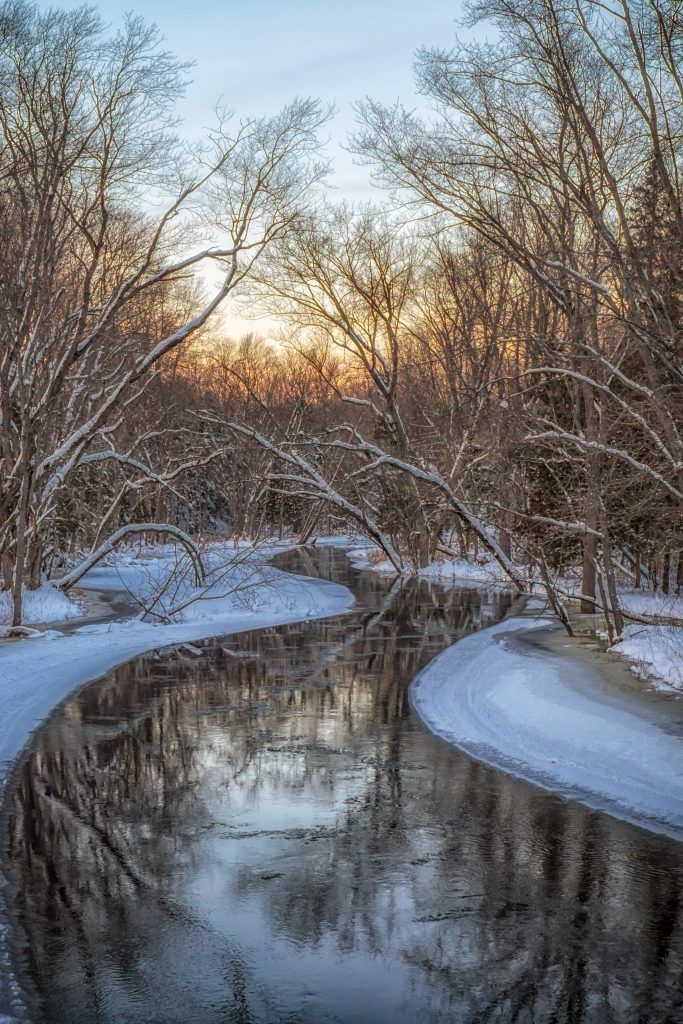
Photo by David Veldman
As most landscape shooters will tell you, anyone can shoot a landscape. But shooting a ‘great’ landscape image is considerably more difficult.
It requires hard work, persistence, and patience.
Recommended Reading: If you’d like a more complete training on capturing beautiful landscape photographs, grab a copy of Photzy’s best-selling premium guide: Complete Landscape Photography.
While this is part of the process, it can sometimes lead to exasperation and boredom. I can say confidently, from personal experience, that at times it’s easy to become disillusioned or dull. The thrill can wear off, and you may feel like you’re simply shooting the same image over and over again.
Fortunately, this tutorial is here to help. In it, I am going to give you some tips on how to reignite that passion you felt when you took your first landscape photograph.
It’s important to remember that, like anything worth doing, landscapes require consistent practice. That means shooting regularly, even if you’re stuck with the same subject matter.
Excellence is almost always derived from persistence.
Without any more delay, let’s jump into the first tip.
1 - Go Somewhere New
Location is one of, if not the most, important factor for a landscape photographer. Ansel Adams described it as ‘knowing where to stand.’ Regardless of where you regularly plant your feet, it’s all too easy to become stuck in a geographical rut.
Of course, this isn’t always our fault. Even professional landscape photographers generally shoot in their local area, and the rest of us don’t enjoy the luxury of simply traveling wherever we want.
So when I say ‘go somewhere new,’ I don’t necessarily mean that you should book the next flight to Patagonia. Sometimes a little step can be all that is needed.
If you live in a heavily forested area, for example, you can search for the nearest exception.
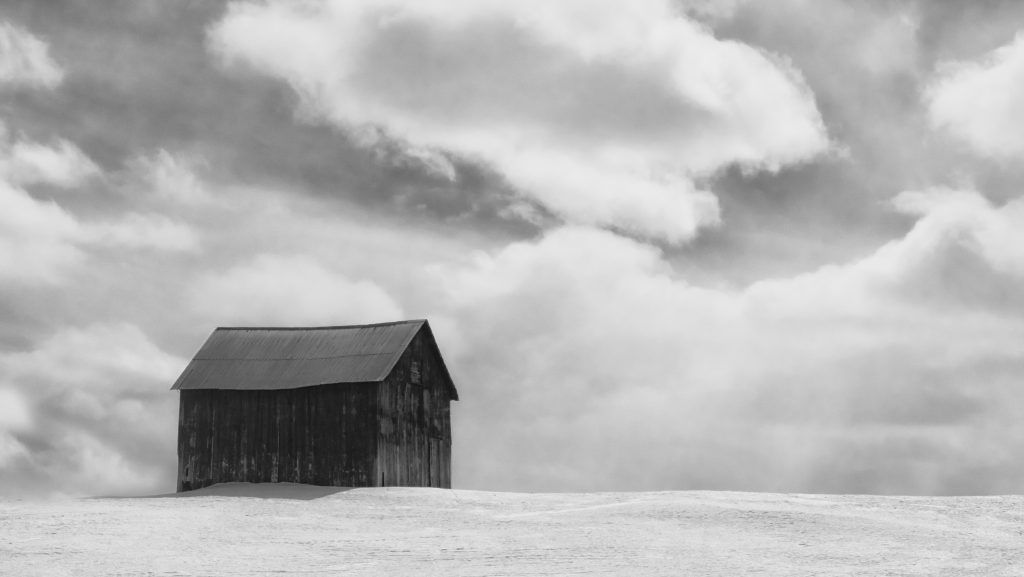
Photo by David Veldman
On the day that I shot this image, I was deliberately looking for something new while I drove about. Because I live in a county dominated by trees, I was searching for an area free of woodlands, and I eventually found it.
Take a look at your work, and if you find a pattern of similar shots, try to shoot something that contrasts them.
In many cases, you can find brand new inspiration with nothing more than a day trip.
In many cases, you can find brand new inspiration with nothing more than a day trip.
This isn’t to say that I discourage long distance traveling. If you have the option, travel to another country or climate and enjoy the refreshing change of scenery.
2 - Shoot Black And White
Most landscape photographers shoot in color.
Nature is a veritable palette of colors and shades, so it makes sense to take advantage of those striking elements.
However, this doesn’t mean you should discount the timeless appeal of black and white.
Monochrome images, when shot and processed properly, can create a uniquely beautiful mood.
Note that not every image will look great when converted to black and white. Pictures that possess strong contrast, shapes, and textures are the top candidates for conversion.
You will get the best results if you shoot in color first (particularly raw) and use post-processing to mix the color channels as you see fit.
Black and white is especially useful during the day when the sunlight is harsh – a time generally avoided by landscape photographers.
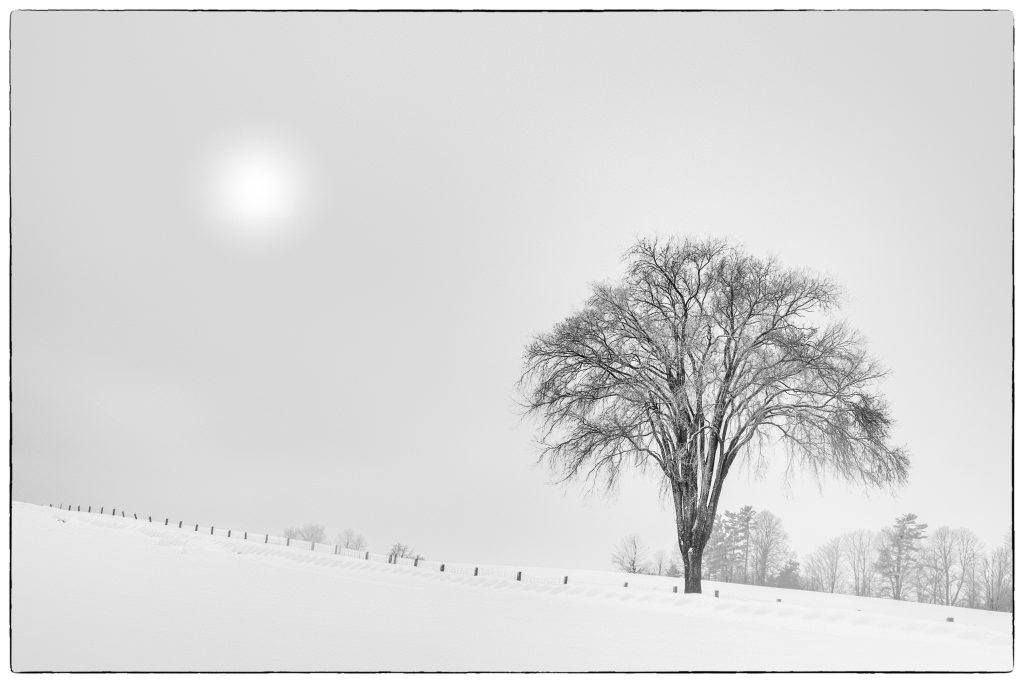
Photo by David Veldman
In the image above, I recognized the monochrome potential while I was shooting. The light was rather flat, and the scene was already devoid of any strong color. Converting to black and white served to highlight the simplicity of the scene.
Recommended Reading: If you’d like to learn how to create amazing black and white images, grab a copy of Photzy’s best-selling premium guide: Better Black and White.
3 - Gear
I must preface this tip by pointing out that gear will never, under any circumstances, make you a better photographer.
However, in some cases, it can act as a creative boost, pushing us to try new and original shots.
I’m not suggesting that you run out and buy a brand new wide-angle lens, but if you can afford it, there are cheap simple tools that can enhance your photos and the shooting experience.
The most obvious example is filters.
Gear will never, under any circumstances, make you a better photographer. However, in some cases, it can act as a creative boost, pushing us to try new and original shots.
A strong neutral density (ND) filter will allow you to experiment with long exposures during the daylight hours. You can blur clouds to create artistic effects, or turn water into silky white ribbons. An ND filter is a tool that every landscape photographer should own.
Graduated filters can be useful as well. As the name implies, they are darker on one side of the filter, which you can use to add drama to the sky and control contrast in a scene. Of course, you can mimic this effect with software when post-processing, but this may result in degraded image quality.
If you’re interested in shooting black and white landscapes, consider buying a red filter.
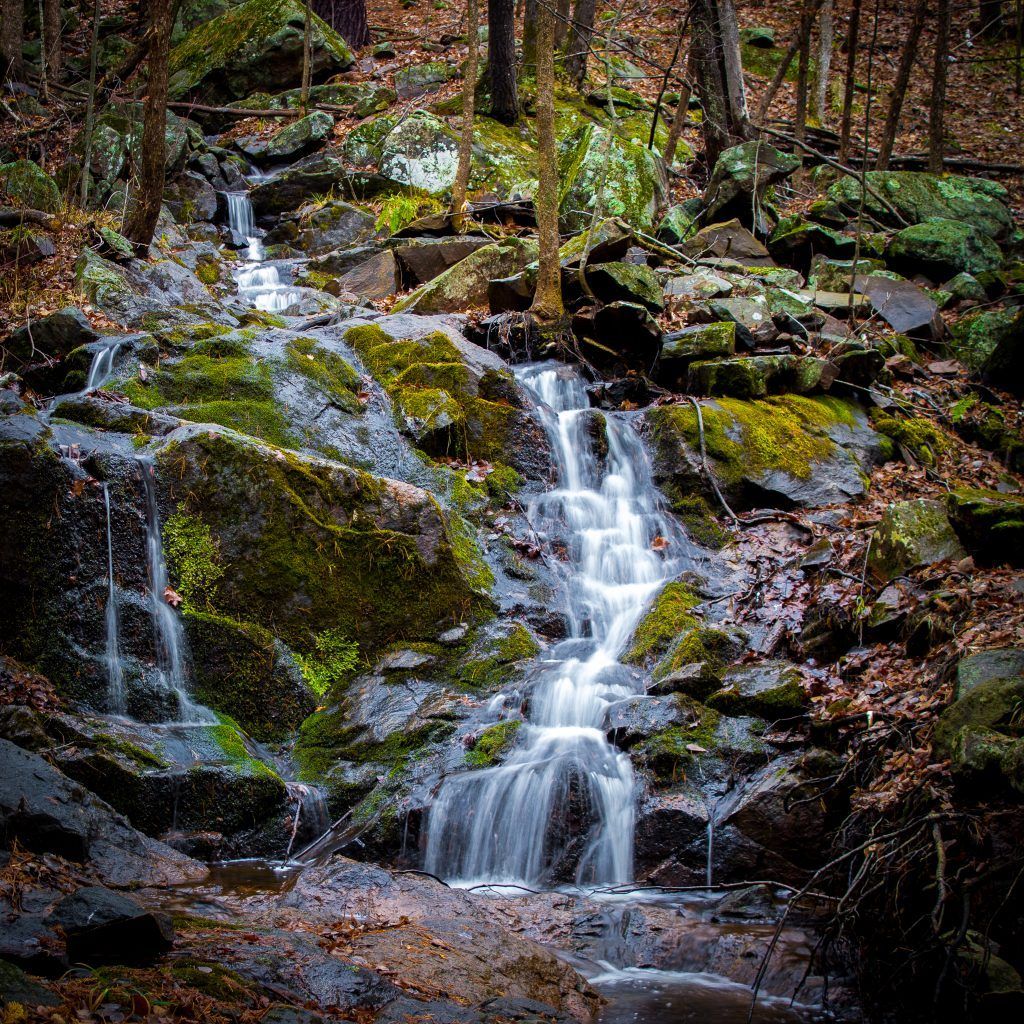
Photo by David Veldman
A red filter will darken blue skies and add a real ‘pop’ to your monochrome shots.
You can also achieve this look with post-processing by manually mixing the colors in Lightroom, but that technique can result in ugly fringing.
Despite our advancements in technology, optical filters still perform better than their software counterparts.
4 - Shoot At Night
Landscape photographers prize beautiful light. Even if you’ve found the perfect vista, with strong foreground interest and an eye-catching composition, your image can look flat and boring without the right illumination. Because of this, we tend to shoot in the period known as the Golden Hour – the sweet spot an hour after sunrise and an hour before sunset.
At this time of the day, light has a directional, soft, and warm quality. Some photographers also enjoy shooting in the Blue Hour – that elusive period after the sun has set – but light is still lingering.
It may be tempting to pack up your equipment after the last rays of light have faded, but I’d like to encourage you to think of the night time as an entirely new world of landscape opportunities.
You may be surprised at how different the world looks in the dark.
This sounds like an obvious statement, but it’s hard to appreciate until you’ve shot the same place in daylight and at night.
Moonlight can create stunning, ethereal images, transforming a scene with its magical silver glow. No moon? No worries. Stars create a wonderful backdrop for a landscape image.
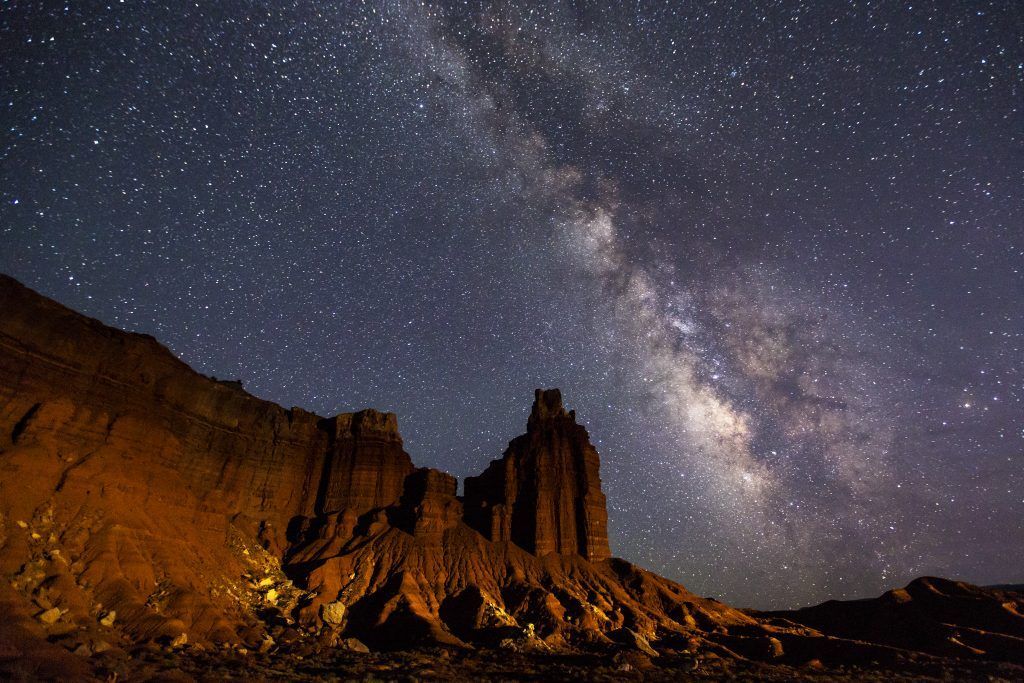
Photo by Jacob W. Frank
You can even shoot star trails, or try to capture the Milky Way.
While many photographers close the shop at sunset, you can spur your creativity and capture something unique if you stay out at night.
Recommended Reading: If you’d like a more comprehensive training on capturing beautiful landscape photographs, grab a copy of Photzy’s best-selling premium guide: Complete Landscape Photography.
5 - Stop Shooting
No, I didn’t mistype that. I meant it. Stop shooting.
Before you skip this section, give me a minute to tell a personal story.
Last year, I was in a rut. It happens to us all, which is part of the reason why I chose to write this guide.
I felt like my landscape images had become dull and cliché. It seemed like I was snapping the same shot over and over, and that my work had plateaued.
Even worse, it seemed like the process had become stale. I didn’t enjoy shooting as I once had.
I still went out and shot, but it felt like I was doing it out of obligation.
One day, I went for a hike in a nearby nature reserve.
I had my camera with me, but I never once took it out of the case. I simply walked the trail, and enjoyed the serenity of nature.
When I got home, I felt more relaxed than I had in weeks. In that moment, I realized my mistake. Instead of enjoying myself, and then shooting my photographs, I was simply forcing myself to shoot.
The next few times I went out, I left my camera at home. Not only did my wife approve, but also I began to ‘see’ images again.
Over time, I began to bring my camera again.
I only shot when I felt that I really wanted to. The pressure was lifted from my photography, and I found myself taking better shots than I ever had before.
This may seem at odds with my earlier exhortation to ‘always practice.’ Understand that there is a balance between practicing and forcing yourself to shoot.
Take the time to enjoy a scene or a moment for yourself. Learn to appreciate nature for her own merits, not just for the images she can give you.
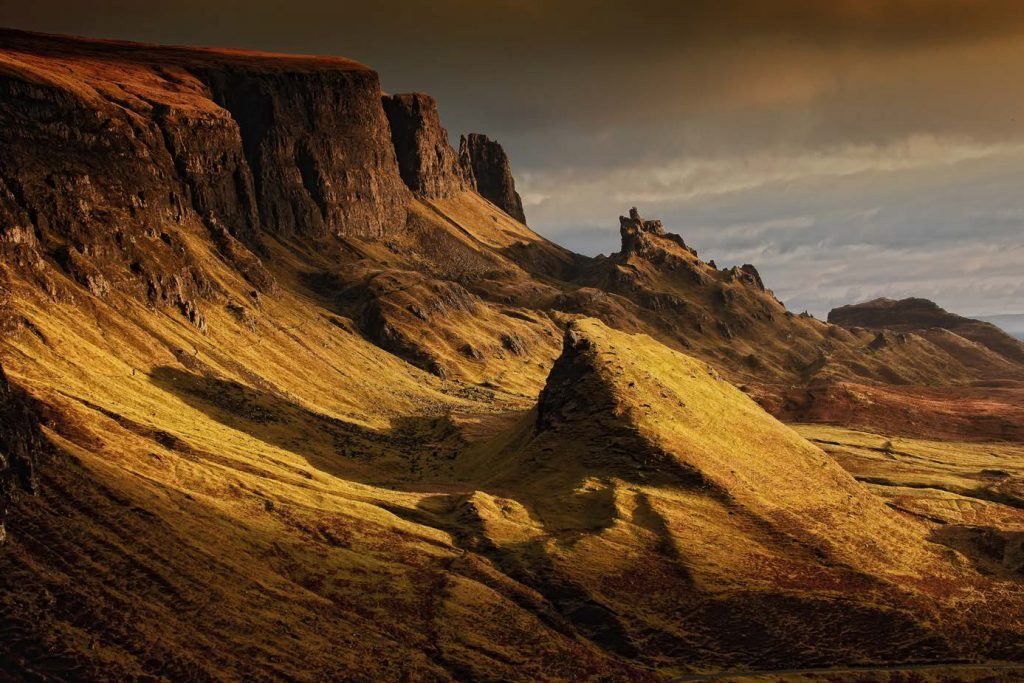
Conclusion
As you can see, my tips all had one common thread: change. When you’re stuck in a rut, change is your lifeline.
It doesn’t have to be something profound or extreme.
It could be as simple as shooting with a prime lens, or a restrictive focal length. It could be stepping outside at night, or taking a day trip to shake things up.
Seek change to keep yourself on your creative toes. Keep practicing, but don’t allow yourself to become frustrated with the process.
I hope these tips help you as much as they have helped me!


